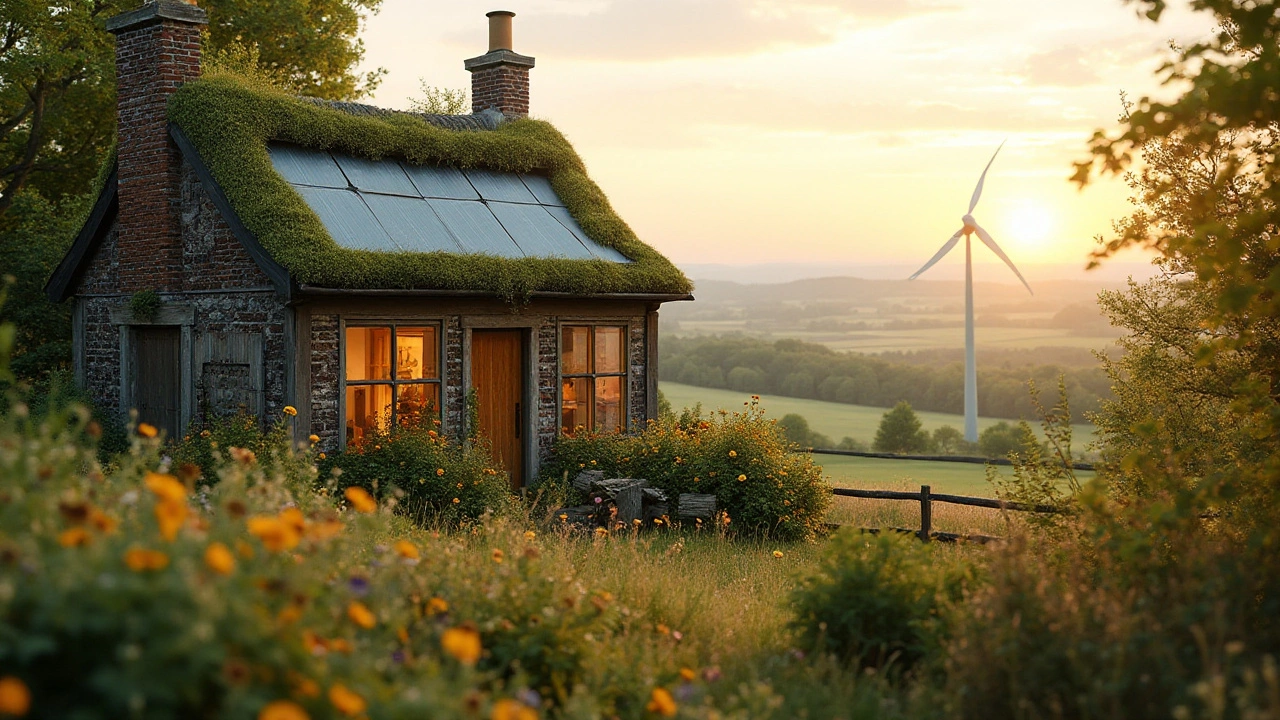Eco Construction Made Simple – Your Go‑To Guide for Building Green in the UK
If you’re thinking about building a house that’s kind to the planet, you’ve landed in the right spot. Eco construction isn’t a buzzword only architects use – it’s a set of real steps anyone can follow. From figuring out what the planning rules allow, to picking the right low‑impact bricks, this guide gives you the basics you need to start today.
What the UK Planning System Allows in 2025
The first thing to check is whether your local council will sign off on green features. The Future Homes Standard, due to roll out in 2025, pushes new homes to meet stricter energy‑efficiency targets. That means you’ll need good insulation, a heat‑pump ready system and low‑carbon flooring. Most councils now ask for a simple sustainability statement with your planning application – list the materials, renewable energy plans and any water‑saving measures you’ll use.
Costs can feel scary, but the rule‑of‑thumb is that a solid eco build adds about 5‑10% to the total budget. Government grants for heat pumps and solar panels can knock a chunk off that number, so always ask your builder about eligible schemes. A quick check on the UK government’s grant portal will show what’s on offer in your area.
Top Eco‑Friendly Materials and What to Avoid
Choosing the right material does most of the heavy lifting. Natural timber from responsibly managed forests, hemp‑crete, straw‑bale infill and recycled steel are all proven to cut carbon footprints. They also tend to breathe better, keeping indoor air fresh without extra ventilation equipment.
On the flip side, steer clear of high‑embodied‑energy products like traditional concrete, PVC plastics and overly processed composites. These not only lock in CO2 but can release harmful chemicals over time. If you need concrete for structural reasons, look for low‑carbon mixes that replace a portion of cement with fly ash or slag.
Another practical tip: keep an eye on durability. A material that lasts 30 years but needs frequent replacement can be worse for the environment than a slightly more carbon‑intensive option that sits solid for a century.
When you shop for finishes, think about reuse. Reclaimed brick, reclaimed wood flooring and salvaged doors add character and reduce waste. Many local salvage yards in the UK have a surprising variety of high‑quality pieces ready for a new build.
So, what does a typical eco‑friendly build look like? Picture a timber frame house with hemp‑crete walls, a roof packed with solar tiles, and a ground‑source heat pump feeding warm water to low‑flow radiators. Add a rainwater harvesting system for garden irrigation and you’ve got a home that not only meets the Future Homes Standard but also saves you money on bills.
Ready to start? Make a short checklist: 1) Verify local planning allowances, 2) Choose low‑carbon structural materials, 3) Plan for renewable energy installations, 4) Look for grant opportunities, 5) Source reclaimed or recycled finishes.
Following these steps will keep your project on track and make sure your new home truly lives up to the eco construction label. Happy building, and enjoy the greener lifestyle you’re creating!
Steps to Building Your Eco-Friendly Dream Cottage
Building an eco-friendly cottage involves choosing sustainable materials, utilizing renewable energy sources, and incorporating smart designs that harmonize with the environment. From selecting the right location to implementing green technologies, each step aims to reduce the ecological footprint without compromising comfort. This article provides guidance on essential elements like insulation, water conservation, and sustainable landscaping, turning your cottage into an oasis of environmental harmony. Readers will find practical tips and inspiring ideas to craft a cozy, green retreat.
